Bluebirds in India are an important part of the country’s diverse avifauna. These colorful birds are found throughout the country and often inhabit gardens, wetlands, and even urban areas. They have a wide variety of sizes and colors, and many of them are quite common in India.
Bluebirds are also important to India’s culture and mythology. In Hinduism, the blue-throated kingfisher is seen as a symbol of prosperity and good luck. In addition, the blue jay is seen as an emblem of courage and intelligence.
Bluebirds also play an important role in the ecology of India, providing an important food source for other animals. The presence of bluebirds in India is a sign of a healthy ecosystem, and their presence is an important part of the country’s biodiversity.
1. White-bellied Blue Robin

Source: Wikipedia
The white-bellied blue robin, or white-bellied sholakili, is a species of small passerine bird belonging to the family Muscicapidae.
It is found only in Southern India, where it is endemic to the Shola forests, which are highland evergreen forests found in the hills of the Western Ghats and Nilgiri Hills. This species is found in both dense and open forests, as well as shrubland and grassland habitats.
The white-bellied blue robin has a distinctive blue-grey plumage, with white underparts, and a bright orange-rufous patch on the wing. It feeds on a variety of insects, spiders, and other arthropods, foraging on the ground or in low vegetation.
The species is not globally threatened but is considered to be vulnerable in states such as Tamil Nadu, where its population is decreasing due to habitat loss and fragmentation.
Conservation efforts include the preservation of existing Shola forests, as well as the reforestation of degraded forests and the establishment of new protected areas.
| Kingdom | Animalia |
| Phylum | Chordata |
| Class | Aves |
| Order | Passeriformes |
| Family | Muscicapidae |
| Genus | Sholicola |
| Species | S. albiventris |
2. White-bellied Blue Flycatcher
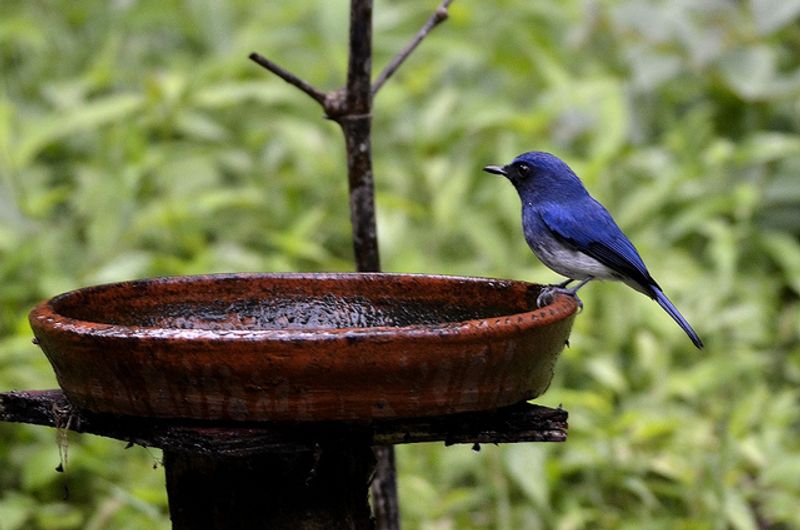
The white-bellied blue flycatcher is a small passerine bird that is found only in the Western Ghats mountain range of southwest India. It is a member of the Muscicapidae family of flycatchers.
The males of the species are a deep blue color with a lighter shade of blue on their brows and a greyish-white belly. Females, on the other hand, have a rufous breast, a white face, and an olive-grey color on the upper parts of their bodies.
Both males and females have white patches on their wings and a white stripe on the sides of their tails. The white-bellied blue flycatcher is an important part of the ecosystem of the Western Ghats, where it feeds on insects and other small invertebrates.
The diet of this species is also varied, as it can easily adapt to its environment and to changes in its food sources. It is also a popular subject in birdwatching, due to its bright colors and distinctive features.
| Kingdom | Animalia |
| Phylum | Chordata |
| Class | Aves |
| Order | Passeriformes |
| Family | Muscicapidae |
| Genus | Cyornis |
| Species | C. pallidipes |
3. Indian Peafowl
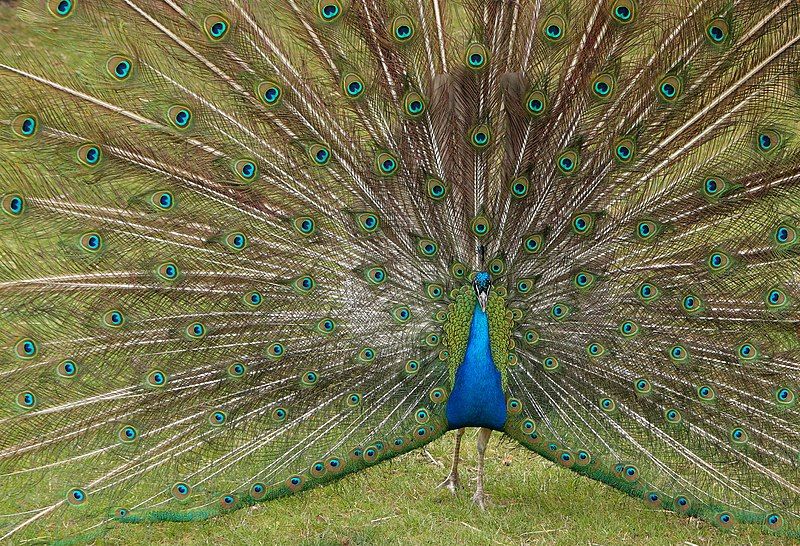
The Indian peafowl, also known as the common peafowl or blue peafowl, is a species of peafowl native to the Indian subcontinent. It is a large and brightly colored bird, easily recognizable by its long crest of feathers and its brilliant blue and green plumage.
The Indian peafowl is the national bird of India, and it has been introduced to many other countries around the world, where it is now established as an introduced species. The Indian peafowl is found in a wide variety of habitats, from open grasslands and woodlands to riverine forests and scrublands.
These birds are omnivorous, feeding on a variety of fruits, seeds, invertebrates, small vertebrates, and even carrion. The males of this species are highly territorial and can be quite aggressive when defending their territory.
The males also have a distinctive call, which can carry for up to a mile. The Indian peafowl is an important species in culture and mythology, and it has been popularized in art, literature, and film. It is also popularly kept as a pet in some parts of the world.
The wild population of this species is declining due to habitat destruction and hunting, and it is listed as near threatened on the IUCN Red List. Conservation efforts are underway to protect this species and ensure its long-term survival.
| Kingdom | Animalia |
| Phylum | Chordata |
| Class | Aves |
| Order | Galliformes |
| Family | Phasianidae |
| Genus | Pavo |
| Species | P. cristatus |
4. Indian Blue Robin
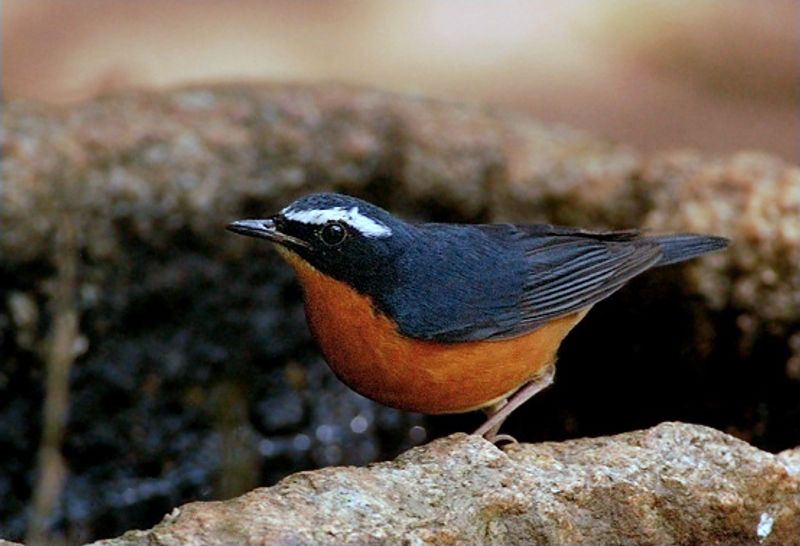
The Indian blue robin is a small bird native to the Indian Subcontinent. It is a member of the Old World flycatcher family Muscicapidae, a group of songbirds that hunt for insects while in flight.
Previously, it was classified as a thrush but was reclassified in the Muscicapidae family due to its distinct physical characteristics. It is also known by the name Indian blue chat, a name that refers to its vibrant blue plumage.
The Indian blue robin is an active bird that lives in a variety of habitats, including forests, shrublands, and grasslands. Its diet consists mainly of insects, but it will also feed on seeds and berries when they are available.
It has a distinct call that is used to communicate with other members of its species, and it is known to be a highly social bird that can form large flocks.
The Indian blue robin is an important species in the Indian Subcontinent, and conservation efforts are underway to ensure its continued survival in the region.
| Kingdom | Animalia |
| Phylum | Chordata |
| Class | Aves |
| Order | Passeriformes |
| Family | Muscicapidae |
| Genus | Larvivora |
| Species | L. brunnea |
5. Asian Fairy-bluebird
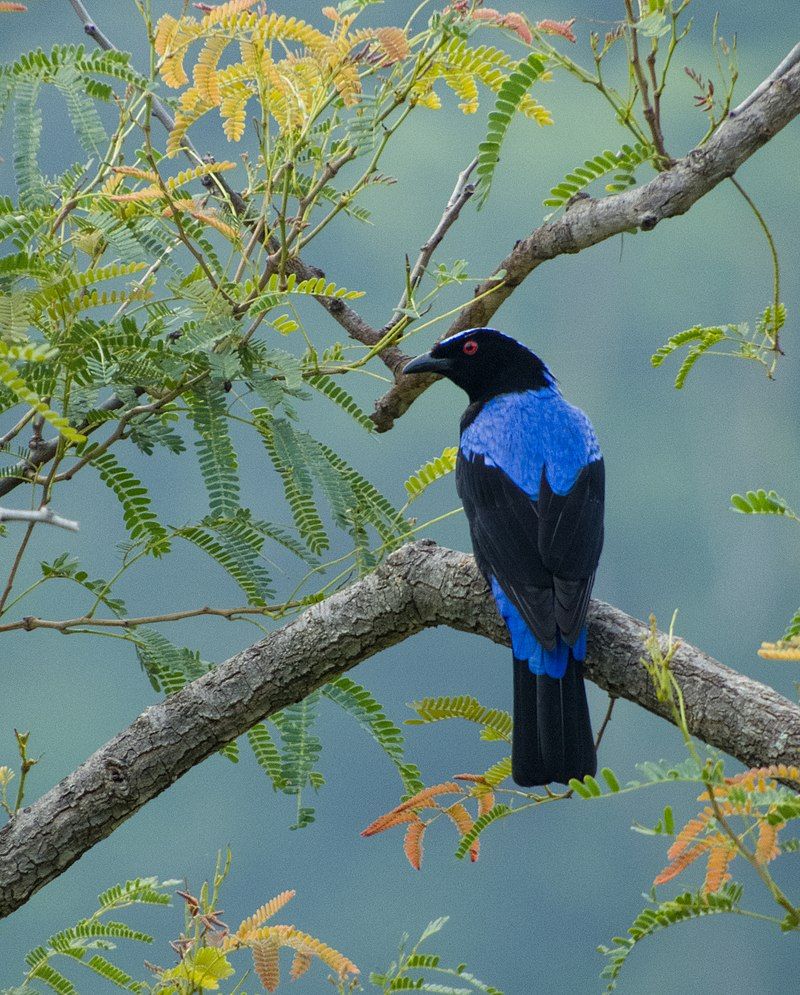
The Asian fairy bluebird is a type of passerine bird, which is known for its medium size and its preference for living in trees. This species of bird can be found in forests throughout tropical southern Asia, Indochina, and the Greater Sundas.
During the breeding season, the fairy bluebird will construct a cup nest in a tree and lay two or three eggs. The species was first described by British ornithologist John Latham in 1790. The Asian fairy bluebird is known for its stunning blue plumage.
The upper parts of the bird are a brilliant cobalt blue, while the underparts are a silvery grey. The tail feathers are long and pointed. The beak is slightly curved and black in color.
The fairy-bluebird is a shy and elusive bird, but can sometimes be seen in pairs or small groups. The diet of the Asian fairy bluebird consists mostly of fruit and insects. They may also feed on small lizards, frogs, and other small animals.
The fairy-bluebird is usually seen in the canopy of trees but also forages on the ground. The Asian fairy bluebird is an important species in its native habitat, as it helps to disperse the seeds of the plants it eats.
This species is considered to be of least concern by the International Union for Conservation of Nature. Despite this, the fairy bluebird is still at risk from habitat loss and degradation, as well as from hunting.
| Kingdom | Animalia |
| Phylum | Chordata |
| Class | Aves |
| Order | Passeriformes |
| Family | Irenidae |
| Genus | Irena |
| Species | I. puella |
6. Fairy-bluebird
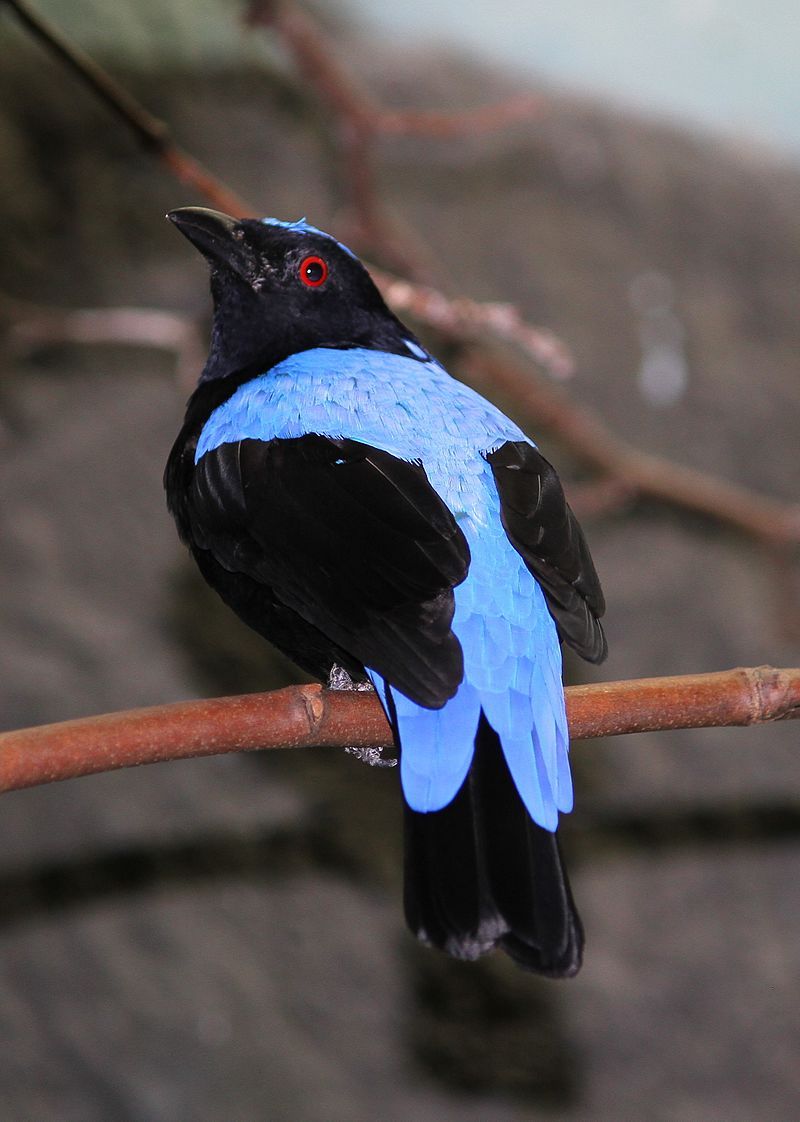
The three fairy bluebirds are unique species of birds that are found in a variety of habitats in tropical southern Asia and the Philippines. They belong to the family Irenidae, which is in the same order as the ioras and leafbirds, making them closely related.
As the only members of the genus Irena, these birds are a beautiful and distinct species with bright blue plumage. Due to their size, fairy bluebirds are considered to be passerine birds, meaning that they have strong and short legs.
They are found in a variety of habitats, including forests and plantations. As small birds, they often flock together in search of food, which can include insects, small fruits, and nectar.
Fairy bluebirds are also known to be quite vocal, with a variety of songs and calls. Despite their beauty and unique characteristics, fairy bluebirds are threatened by habitat destruction.
This is mainly due to deforestation, which has resulted in decreased food sources and nesting sites for the birds. In order to help protect this species, conservation efforts have been put in place to reduce deforestation and create better habitats for the fairy bluebirds.
| Kingdom | Animalia |
| Phylum | Chordata |
| Class | Aves |
| Order | Passeriformes |
| Family | Irenidae |
| Genus | Irena |
7. Blue-tailed Bee-eater
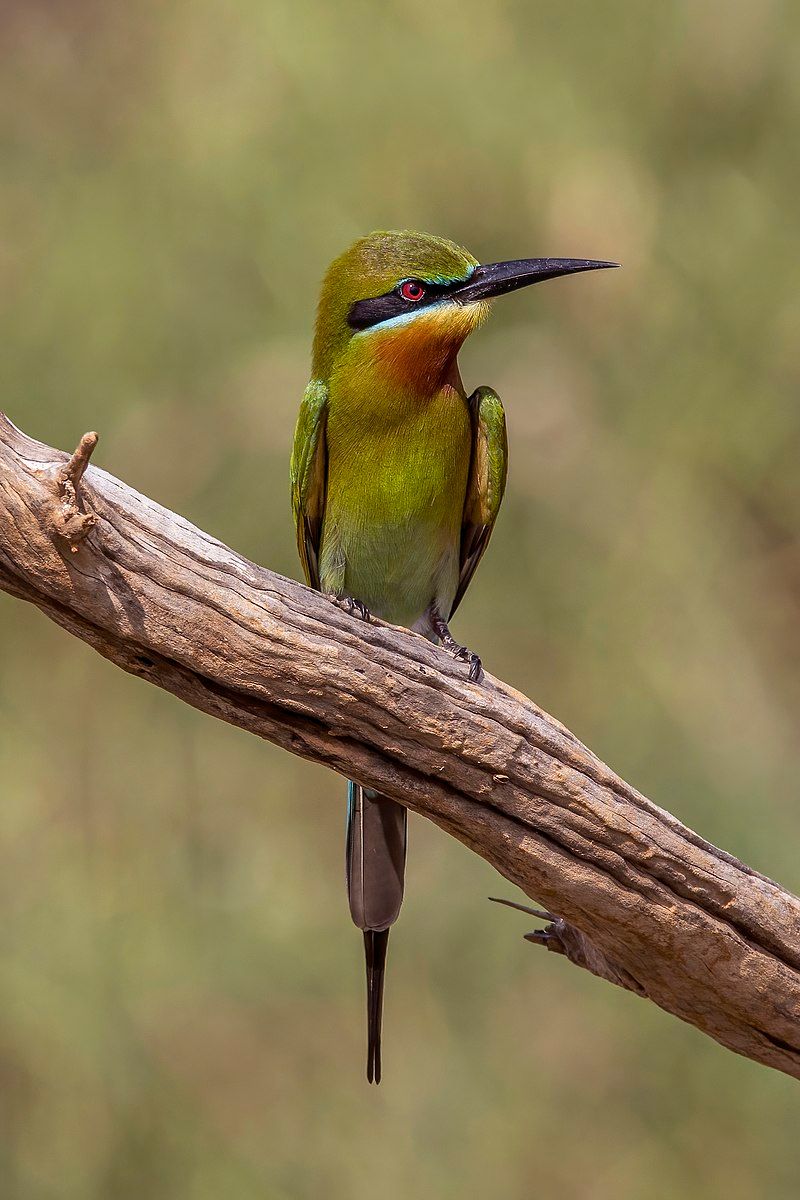
The blue-tailed bee-eater is a type of bird that is part of the bee-eater family, called Meropidae.
It is found in many different parts of South and Southeast Asia, and many populations of the bird are migratory, meaning that they migrate from one area to another in search of food or a better habitat.
The blue-tailed bee-eater is seen in a variety of different habitats, from grasslands and savannas to open woodland and human-modified agricultural areas.
The blue-tailed bee-eater has a long, slender body and short legs, and its most distinctive feature is its blue tail, which is mainly blue-green but can also be tinged with yellow or even black.
The bird has a bright green back and yellow underparts, and its wings and tail are covered in bright blue feathers.
It has a black beak and long, curved tail feathers that are used for display. The blue-tailed bee-eater feeds mostly on bees and other flying insects, and it is a very active bird, constantly on the move in search of food.
It is a gregarious bird and can often be seen in large flocks, especially when migrating. The blue-tailed bee-eater is an important bird for controlling insect populations, as it helps to keep the numbers of bees and other flying insects in balance.
In addition to its ecological importance, the blue-tailed bee-eater is also an attractive bird, with its bright colours and graceful flight. It is a well-known species and is popular with bird watchers, as it is easy to spot in its natural habitat.
| Kingdom | Animalia |
| Phylum | Chordata |
| Class | Aves |
| Order | Coraciiformes |
| Family | Meropidae |
| Genus | Merops |
| Species | M. philippinus |
Conclusion
Bluebirds are an important part of the Indian avian landscape, and their presence has been documented across the country.
They are an integral part of the Indian ecosystem and have played an important role in the cultural and spiritual lives of the people in India. Unfortunately, their numbers have been declining due to habitat destruction, hunting, and other human-induced activities.
It is important that we take steps to protect them and ensure that they remain a part of the Indian landscape for many years to come.